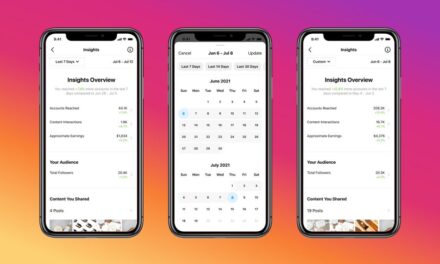Repost from: https://martechtoday.com/5-essential-strategies-b2b-marketers-must-master-in-2019-228066
We’re knee deep in 2019 strategic planning and budgeting. The list of things we need to do, and the possibilities, are endless. We have lots of strategies, tactics and tech to choose from to hit our revenue marketing goals. With all the choices, one thing is for sure: our resources and time will be limited.
It’s the perfect time to commit to mastering marketing essentials for success in 2019. When we put a solid foundation in place, the innovative strategies, tactics, programs and technology we deploy will be that much more impactful. Using the analogy of the human body and exercising to improve athletic performance, a key ingredient in your 2019 plan must be a strong “core” to support the business.
During the B2B Game Changers Conference held last month, this was a clear message delivered by leading B2B marketers who shared their learnings on stage: If you want to predictably hit your pipeline quotas, you must nail the revenue marketing essentials. While the list can vary slightly, depending on your business model and the markets you serve, here are five essentials that high-performing B2B marketing teams consistently focus on to drive high performance.
PRECISION: Accurately defining ICP and identifying best account opportunities
It all starts with identifying and engaging the right audiences that are the best fit for your solutions. “Audience” today means both the right set of companies/organizations and the professionals/roles that make up the buying group responsible for purchasing your solution. To do this requires adopting processes for capturing critical data about your prospects, customers and their journey – who/when/where/what is necessary to win or expand business (see also HYGIENE below).
It’s important to start with precision. Focus first on identifying a smaller universe of accounts and roles and then expand results, rather than relying on random acts of marketing where you target everybody. It may feel foreign at first because your quantity of engagements and leads will likely be lower. You may also be tempted to use advanced tech that promises immediate results. Stop. Focus on your ability to capture and define precise targets; then you can test and deploy advanced strategies such as predictive marketing and intent data modeling to identify more of the best accounts and buyers.
TRUST: Committing to permission-based marketing in an increasingly regulated world
With your audiences in scope and using data to guide, the next essential is to make sure you’re prepared for and can commit to permission-based marketing. Two things are mandating this today:
- Professionals and buyers are leery of companies/brands that don’t treat their information with care.
- Data-privacy laws with real consequences are being deployed around the globe.
Today, professionals more often do business with companies that are trusted, where transparency is the default, and where there is clarity on how you’re handling their personal and company information. Be proactive. The best-in-class brands have fundamental processes in place, such as asking for opt-in everywhere. Also, they’re clear about how they’re using behavioral data, such as website cookies. And they provide very visibly, easy-to-access info on how their data is used.
The second piece of trust centers on the punitive side – i.e., regulations. Compliance regulations around data privacy and the use of personal information are being deployed around the globe, the poster child being the European Union’s General Data Protection Regulation (GDPR). Countries in APAC, Latin America and North America also have bills that are likely to be enacted over the next few years, which could cost your company its brand reputation and substantial fines if non-compliant. The permission mindset builds trust, gives you an advantage today with your audiences and it steers your company clear of punitive fines.
HYGIENE: Generating quality, actionable data to drive performance and create experiences
Permission-based prospect and customer data is a best practice, but without clean, accurate data your demand and revenue marketing efforts will fail. According to a recent survey by DemandGen Report, on average, more than 35 percent of the data in existing databases is unmarketable. You can’t even use it. Not only does it cost you in database capacity costs, but the hundreds of hours of time and resources spent by marketing and sales using bad data for outreach is also killing conversion rates and morale.
A must-have on the 2019 plan is a “get clean, stay clean” data-hygiene effort to ensure your database is operating at full capacity. This means auditing your data-capture processes and sources, putting in place governance filters before data can enter the database, and having a regular cleansing process for any prospect or customer data that is:
- invalid
- unstandardized
- duplicate
- non-compliant
This move alone will improve every effort you deploy and save you money that can be re-allocated towards real revenue-generation strategies and tactics.
SPEED: Increasing velocity makes everything perform better
This is one of the most often overlooked areas. We all know the adage that “speed kills all deals.” If it takes two or three days to follow up on a lead or inquiry, or, even more common, seven or eight days to get your leads loaded into marketing automation or CRM after a webcast or event, for example, you’re hamstringing your effort. Your current processes and tech investments need to have a speed evaluation. You should identify areas where data can be routed faster, action can be taken within an appropriate amount of time, and one where sales and marketing are trained on how and what to do at each stage of the customer journey.
One other big data point being watched closely by the executive team is “pipeline velocity” – the time from when an opportunity is created to the time the deal is closed-won. There are so many points of improvement to be made here that can make a significant impact on hitting revenue quotas within a quarter. Understand and improve these and your results will increase immediately.
INSIGHTS: Measuring to understand the good, the bad and the ugly
We purposefully use “insights” instead of “attribution” to emphasize marketing’s need to be in a constant state of improvement and learning versus trying to prove your value. Marketers spend countless hours trying to find data to prove their point because we’re under pressure to prove ROI. This isn’t productive.
A better way high-performing marketing teams are using insights starts with a few key ingredients:
- agreed-upon key performance indicators (KPIs)
- tools that can measure performance (not too many)
- easy-to-use dashboards that can help all stakeholders (marketing, sales, execs, etc.) make smarter decisions.
It’s awesome when you get good news, but discovering bad news is just as insightful. The quicker you can understand the opportunity and do more of what’s working and stop/avoid what’s underperforming, the quicker you can improve performance against goals.
The new year is right around the corner. There’s no better time to get started on nailing the B2B marketing essentials that ensure your revenue marketing engine performs and delivers in 2019. Remember, speed matters. It’s go time!














